Scaffolding Rental Naval Academy
Find Scaffolding Hire in Naval Academy
Get 3 FREE Rent Scaffolding quotes for your project today! Compare profiles, reviews, accreditations, portfolio, etc... and choose the best offer.
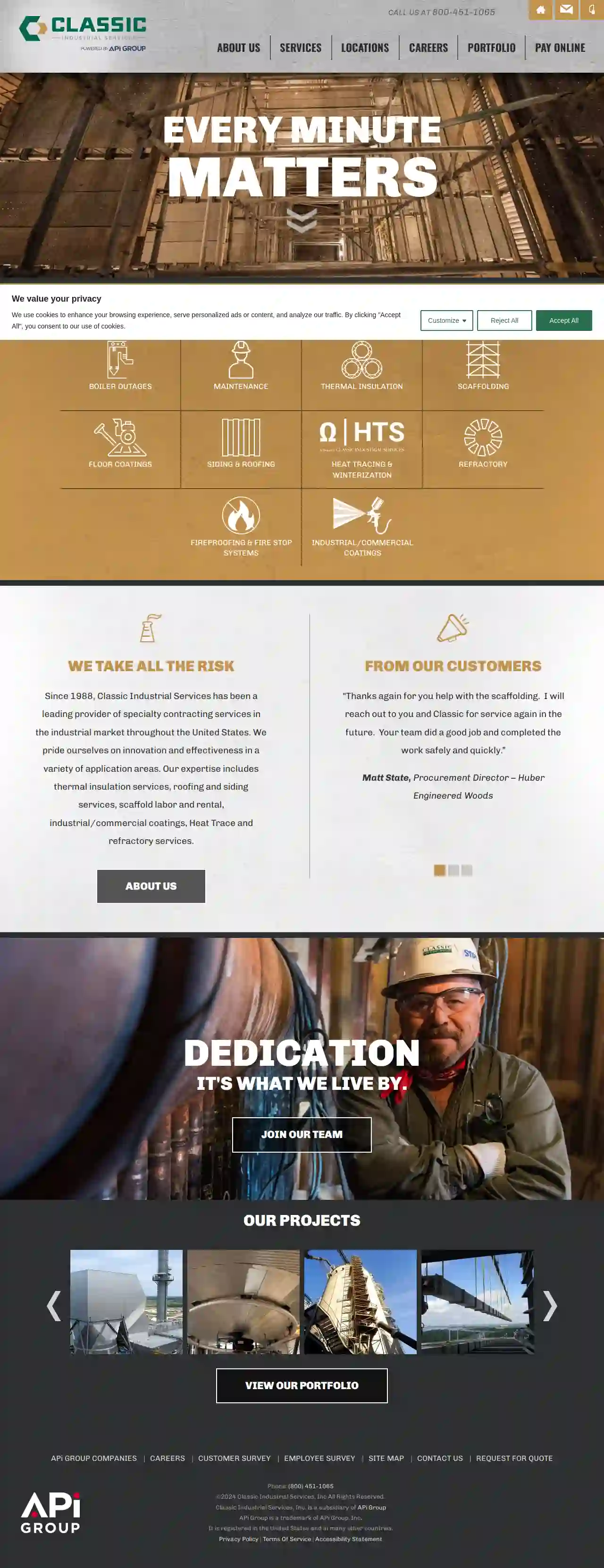
Classic Industrial Services Inc
53 reviews456 Highlandia Drive, Baton Rouge, 70810, USClassic Industrial Services is a leading provider of specialty contracting services in the industrial market throughout the United States. Since 1988, we have been dedicated to innovation and effectiveness in various application areas including thermal insulation services, roofing and siding services, scaffold labor and rental, industrial/commercial coatings, Heat Trace and refractory services. Our core purpose is to provide construction services that make our customers' projects simpler and more successful. We prioritize safety, respect, and fairness in our work, and we are committed to delivering quality work and customer service for every project.
- Services
- Why Us?
- Accreditations
- Our Team
- Testimonials
- Gallery
Get Quote
Layher Scaffolding
51 reviews8225 Hansen Road, Houston, 77075, USLayher North America is a leading provider of scaffolding systems and solutions. With a strong presence in the United States and Canada, we offer a wide range of products and services designed to meet the needs of various industries, including construction, oil and gas, power plants, and more. Our scaffolding systems are designed to be safe, efficient, and cost-effective. We offer a variety of scaffolding solutions, including Allround Scaffolding, Layher Lightweight, SpeedyScaf Scaffolding, STAR Frame Scaffolding, and Rolling Towers. Our protective systems include Allround FW Roof, Keder XL Roof System, Cassette Roof, Protect System, and Edge Protection Railing Clamp. At Layher North America, we are committed to providing our customers with the highest level of service and support. Our team of experts is dedicated to helping you find the right scaffolding solution for your project. We offer pre-planning and optimization, on-site support and training, digital design and engineering, and scaffold information modeling. We are proud to be a part of the Layher Group, a global leader in scaffolding systems. With a strong presence in over 40 countries, we are well-equipped to meet the needs of our customers around the world.
- Services
- Why Us?
- Accreditations
- Gallery
Get Quote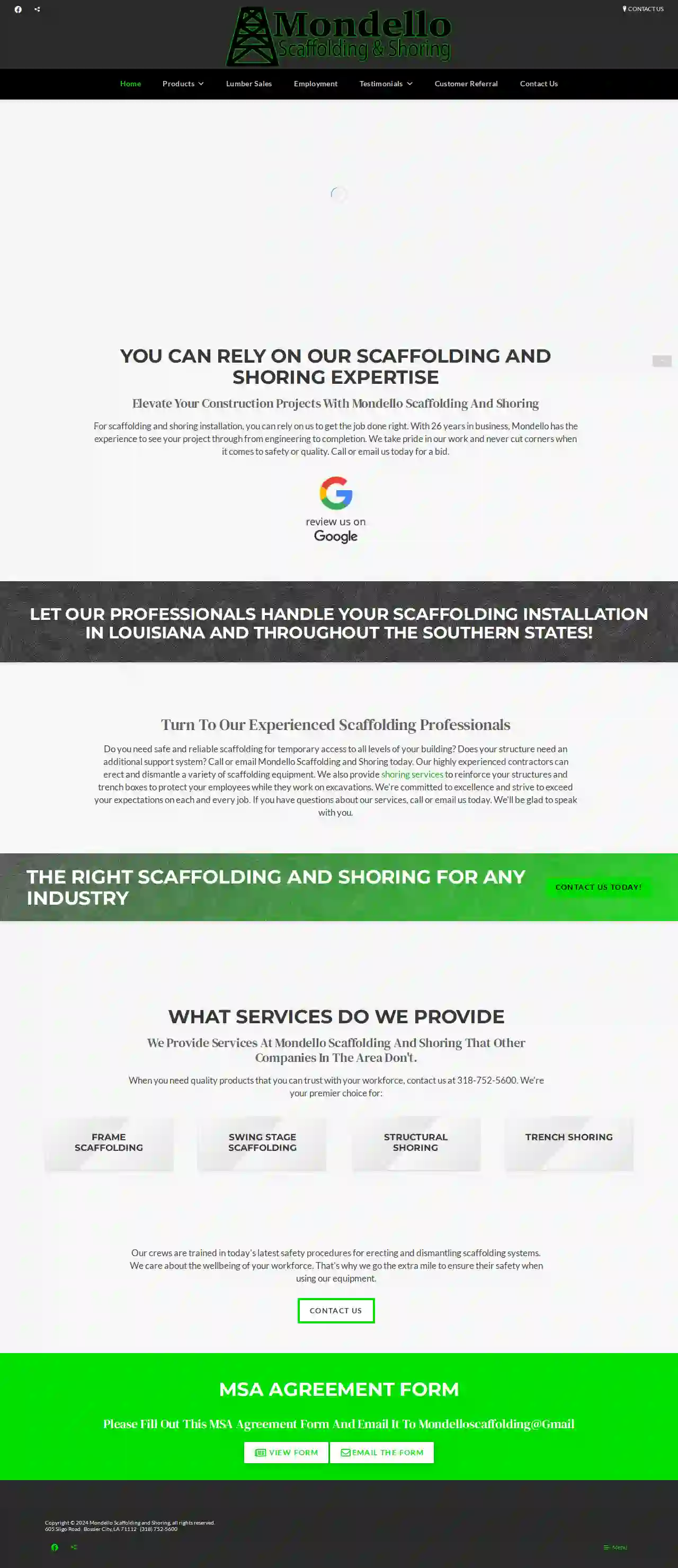
Mondello Scaffolding & Shoring
4.76 reviewsBossier City, LA, 605 Sligo Road, 71112, USMondello Scaffolding and Shoring is a premier provider of scaffolding and shoring services, offering a wide range of solutions for construction projects. With over 26 years of experience, the company prides itself on its commitment to safety, quality, and customer satisfaction. From frame scaffolding to trench shoring, Mondello Scaffolding and Shoring has the expertise and equipment to meet all your construction needs.
- Services
- Why Us?
- Testimonials
- Gallery
Get Quote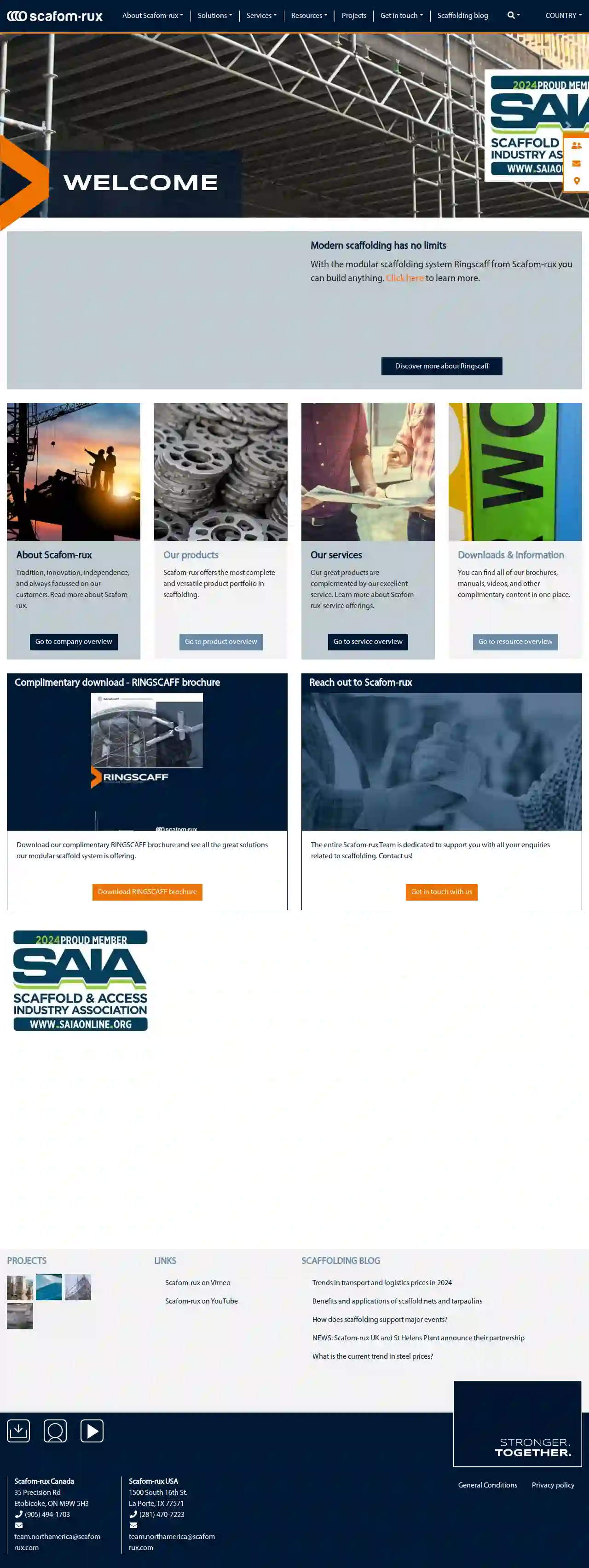
Scafom USA
52 reviews35 Precision Rd, Etobicoke, M9W 5H3, USAbout Scafom-rux Scafom-rux is a leading global provider of innovative and reliable scaffolding solutions. With a rich history of tradition, innovation, and customer focus, we offer a comprehensive range of products and services to meet the diverse needs of our clients in various industries. Our commitment to excellence is reflected in our high-quality products, exceptional service, and unwavering dedication to safety. We strive to be a trusted partner for our customers, providing them with the best possible solutions for their scaffolding requirements.
- Services
- Why Us?
- Gallery
Get Quote
Apache Industrial
51 reviewsCorporate Office, North Lake Houston Shop and Training Facility, 250 Assay Street, Houston, Texas, 77044, USApache Industrial is a leading provider of soft craft services, including scaffolding, fireproofing, coatings, insulation, digital solutions, and abatement. With over 40 locations across North America, the company offers a comprehensive and one-stop solution for project needs, emphasizing efficiency, quality, safety, and environmental compliance. Apache Industrial has a strong commitment to digitization and technology, providing innovative digital solutions to enhance project management, scanning, design, and 3D modeling. The company prioritizes customer-specific solutions, cost savings, and safety, with a focus on quality inspection teams and experienced craft professionals.
- Services
- Why Us?
- Accreditations
- Our Team
- Testimonials
- Gallery
Get Quote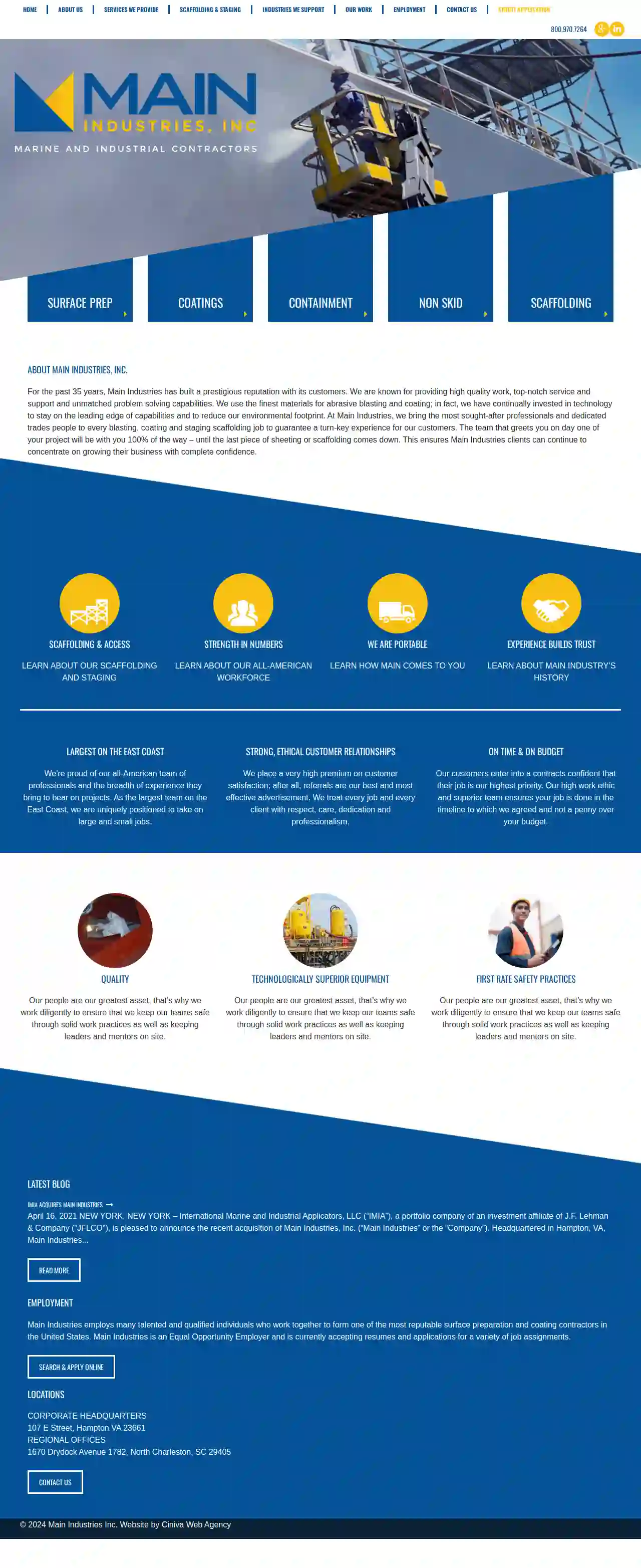
Main Industries, Inc
Hampton, VA, 107 E Street, 23661, USMain Industries, Inc. is a prestigious surface preparation and coating contractor with over 35 years of experience. The company is known for providing high-quality work, top-notch service and support, and unmatched problem-solving capabilities. Main Industries uses the finest materials for abrasive blasting and coating, and has continually invested in technology to stay on the leading edge of capabilities and reduce its environmental footprint. The company brings together the most sought-after professionals and dedicated tradespeople to guarantee a turn-key experience for its customers. The team that greets clients on day one of a project will be with them 100% of the way, ensuring that clients can concentrate on growing their business with complete confidence.
- Services
- Why Us?
- Accreditations
- Gallery
Get Quote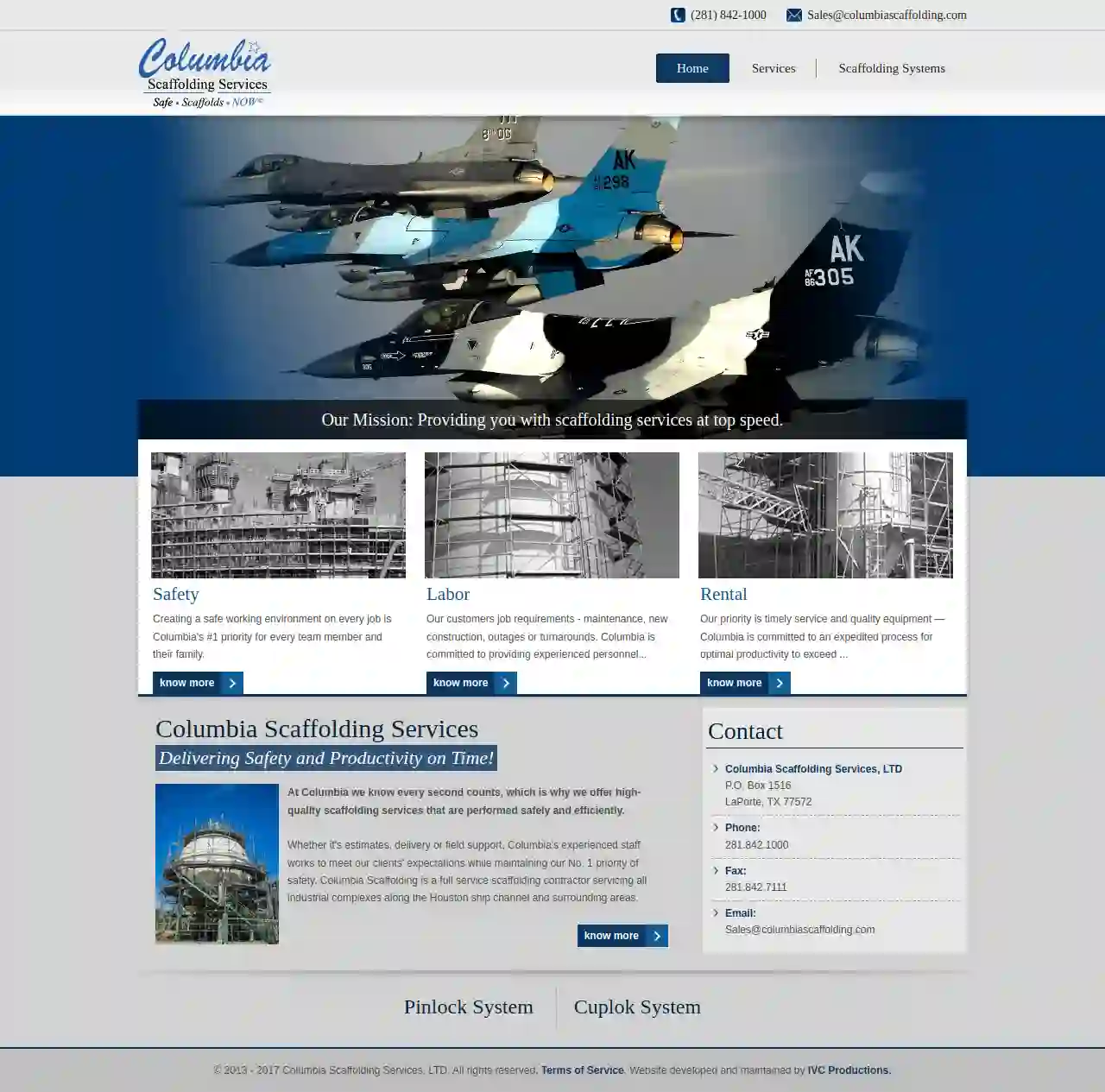
Columbia Scaffolding Services
3.47 reviewsLaPorte, TX, P.O. Box 1516, 77572, USColumbia Scaffolding Services, LTD is a full service scaffolding contractor that delivers safety and productivity on time. With a focus on safety, labor, and rental services, Columbia aims to meet clients' expectations efficiently. Based in LaPorte, TX, they serve all industrial complexes along the Houston ship channel and surrounding areas.
- Services
- Why Us?
- Accreditations
- Our Team
- Testimonials
- Gallery
Get Quote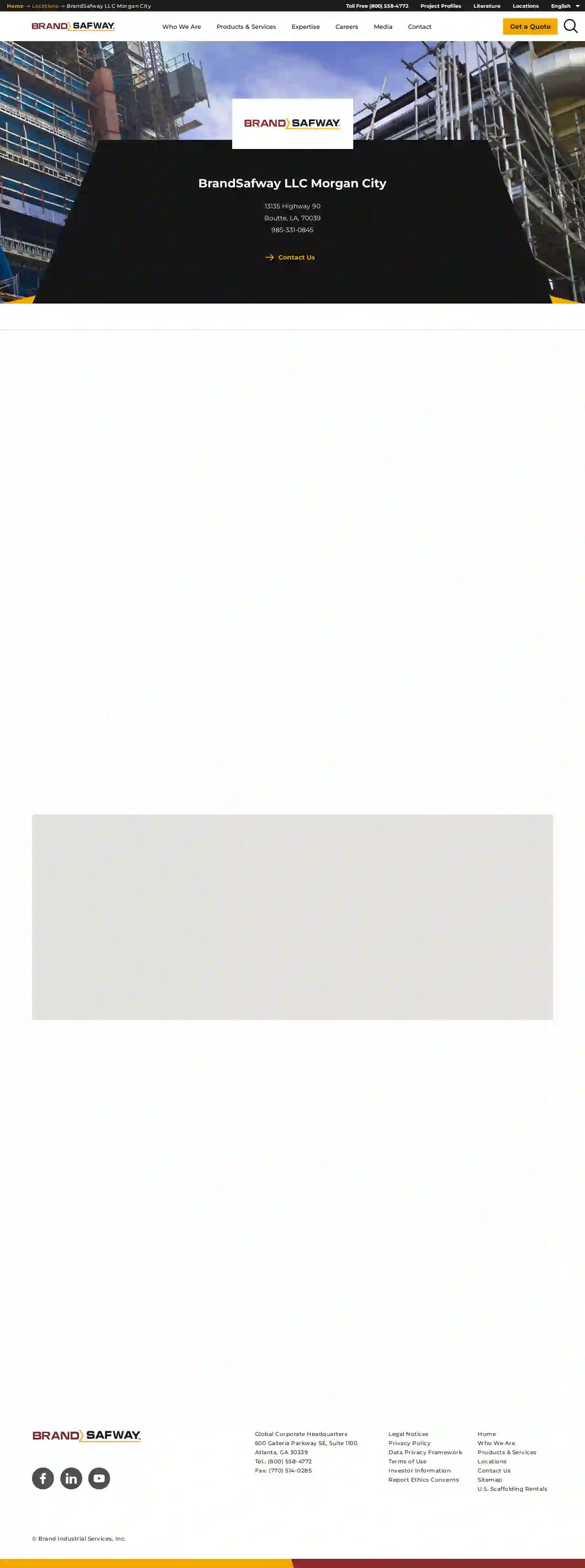
BrandSafway LLC Morgan City
55 reviews123 BrandSafway Blvd, Morgancity, 12345, USBrandSafway is a leading provider of access solutions, including scaffolding, aerial work platforms, and forming and shoring equipment. With a strong commitment to safety, quality, and customer satisfaction, BrandSafway offers a wide range of services tailored to meet the unique needs of clients across various industries. Their team of experienced professionals works closely with clients to understand their requirements and deliver customized solutions that enhance efficiency and productivity. BrandSafway is dedicated to providing innovative solutions that ensure safe and efficient access to any work area, making them a trusted partner for businesses seeking reliable access solutions.
- Services
- Why Us?
- Accreditations
- Our Team
- Testimonials
Get Quote
AXIOS Industrial Group - Sulphur
The Woodlands, TX, 10077 Grogans Mill Rd, Suite 450, 77380, USAt Axios Industrial, we're a dynamic industrial service company that values safety, productivity, predictability, and unparalleled expertise. We provide innovative solutions for leaders in the oil and gas, power generation, pulp and paper, agriculture, and pharmaceutical markets. Our team of seasoned professionals is committed to delivering on-time, on-budget solutions that meet our clients' complex needs. With a proven track record of trust, excellence, and safety, we're the trusted partner for your industrial services needs. Our services include scaffolding, insulation, coatings, surface preparation, and specialty services. We use our advanced technology platforms to reduce costs, increase safety, and improve productivity. Our team is dedicated to providing exceptional service and support to our clients. We're headquartered in The Woodlands, Texas, with locations across the US. We're proud to be a leading provider of industrial services and look forward to working with you.
- Services
- Why Us?
- Gallery
Get Quote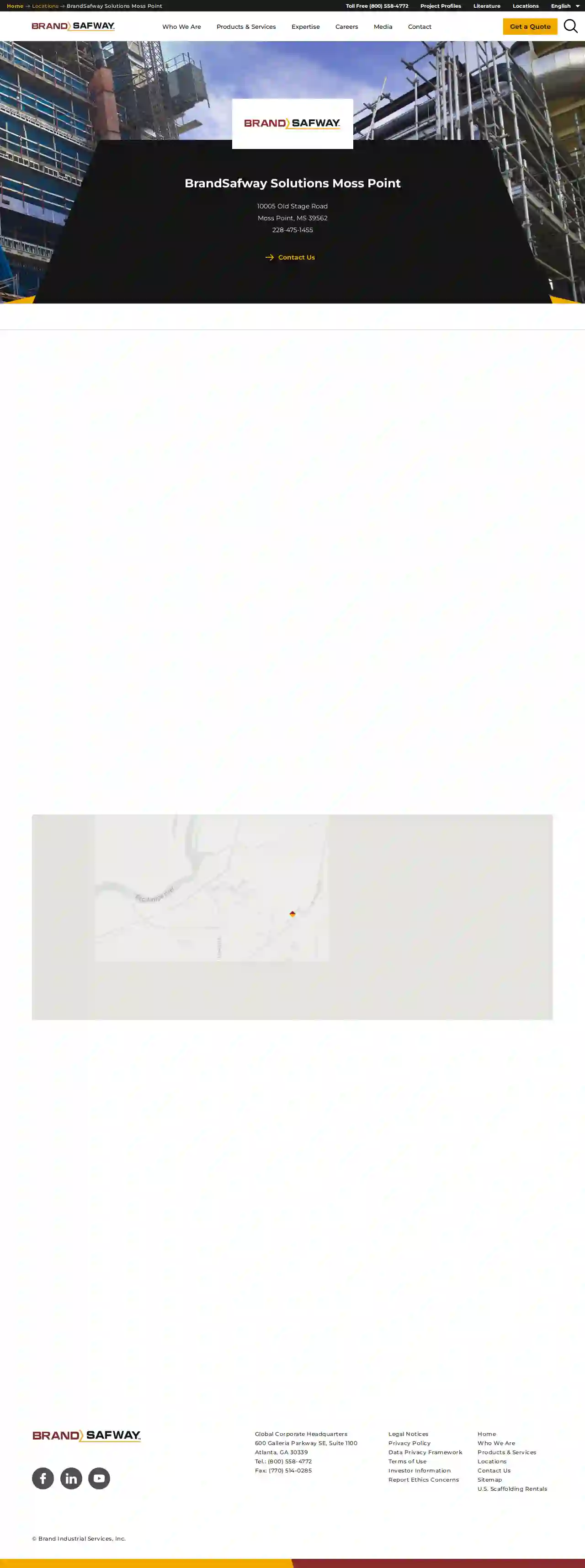
BrandSafway Solutions Moss Point
4.37 reviews123 BrandSafway Blvd, Moss Point, 12345, USBrandSafway is a leading provider of access solutions, including scaffolding, aerial work platforms, and forming and shoring. With a strong commitment to safety, quality, and customer satisfaction, BrandSafway offers a wide range of services tailored to meet the unique needs of clients across various industries. Their team of experienced professionals is dedicated to delivering innovative solutions that enhance efficiency and productivity.
- Services
- Why Us?
- Accreditations
- Our Team
- Testimonials
Get Quote
Over 2,353+ Scaffolding Contractors on our platform
Our scaffolding contractors operate in Naval Academy and surrounding areas!
ScaffoldingHQ has curated and vetted Top Scaffolding Contractors near Naval Academy. Find a reliable contractor today.
Frequently Asked Questions About Scaffolding Rental
- Online Directories: ScaffoldingHQ is a specialized directory that connects you with reputable rental providers.
- Search Engines: Search for 'scaffolding rental [your location]' on Google or other search engines.
- Local Business Listings: Check local business listings, such as Yelp or Yellow Pages, for scaffolding rental companies.
- Word-of-Mouth Referrals: Ask contractors, builders, or friends for recommendations.
- Scaffolding Boards: Wooden planks or metal grating that form the working platform.
- Base Plates: Provide a stable foundation for scaffolding legs, often adjustable to accommodate uneven ground.
- Ladder Access: Ladders or stairs allow safe access to and from the scaffolding platform.
- Castors (Wheels): Used for mobile scaffolding, allowing for easy movement.
- Braces and Ties: Strengthen and stabilize the scaffolding structure.
- Safety Nets: Catch falling objects and prevent debris from reaching the ground.
- Weather Protection: Screens or covers protect workers from wind, rain, or sun.
- Clean and Dry: Clean the scaffolding components thoroughly and allow them to dry completely before storage.
- Rust Prevention: Apply a rust inhibitor to metal components, especially if they will be stored outdoors.
- Organized and Labeled: Store components in an organized manner, labeling them clearly for easy identification.
- Covered Storage: Store scaffolding in a dry, covered area, protected from the elements.
- Off the Ground: Elevate the scaffolding components off the ground using pallets or racks to prevent moisture damage.
- Tube and Clamp: Capacity depends on the configuration and the strength of the components.
- System Scaffolding: Typically has higher load capacities due to its pre-engineered design.
- Mobile Towers: Have specific weight limits based on their size and model.
How do I find scaffolding rental companies near me?
What are some common scaffolding accessories?
What are some tips for storing scaffolding?
What are the weight limits for different types of scaffolding?
How do I find scaffolding rental companies near me?
- Online Directories: ScaffoldingHQ is a specialized directory that connects you with reputable rental providers.
- Search Engines: Search for 'scaffolding rental [your location]' on Google or other search engines.
- Local Business Listings: Check local business listings, such as Yelp or Yellow Pages, for scaffolding rental companies.
- Word-of-Mouth Referrals: Ask contractors, builders, or friends for recommendations.
What are some common scaffolding accessories?
- Scaffolding Boards: Wooden planks or metal grating that form the working platform.
- Base Plates: Provide a stable foundation for scaffolding legs, often adjustable to accommodate uneven ground.
- Ladder Access: Ladders or stairs allow safe access to and from the scaffolding platform.
- Castors (Wheels): Used for mobile scaffolding, allowing for easy movement.
- Braces and Ties: Strengthen and stabilize the scaffolding structure.
- Safety Nets: Catch falling objects and prevent debris from reaching the ground.
- Weather Protection: Screens or covers protect workers from wind, rain, or sun.
What are some tips for storing scaffolding?
- Clean and Dry: Clean the scaffolding components thoroughly and allow them to dry completely before storage.
- Rust Prevention: Apply a rust inhibitor to metal components, especially if they will be stored outdoors.
- Organized and Labeled: Store components in an organized manner, labeling them clearly for easy identification.
- Covered Storage: Store scaffolding in a dry, covered area, protected from the elements.
- Off the Ground: Elevate the scaffolding components off the ground using pallets or racks to prevent moisture damage.
What are the weight limits for different types of scaffolding?
- Tube and Clamp: Capacity depends on the configuration and the strength of the components.
- System Scaffolding: Typically has higher load capacities due to its pre-engineered design.
- Mobile Towers: Have specific weight limits based on their size and model.